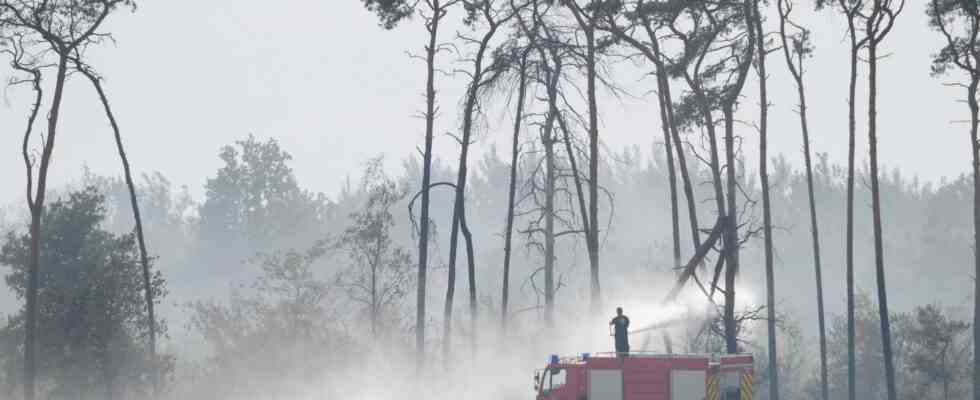interview
Status: 07/27/2022 3:07 p.m
Extreme drought and heat: 2022 is already a particularly critical forest fire year. In an interview, biologist Ibisch explains why the risk will increase in the future and how forests can become more resilient.
tagesschau.de: Large forest areas are currently burning in Saxony and Brandenburg. The extinguishing work will probably take several days. Is the situation particularly bad this year?
Pierre Ibisch: Yes, this is a particularly critical forest fire year. Of course, this has to do with the high number of days with “forest fire weather” and with the mortgage of the last few months and years. There is a lack of water in the landscape, especially in the soil.
To person
Pierre Ibisch is a biologist and professor for nature conservation at the Eberswalde University for Sustainable Development. He leads the research project “Pyrophobic” (fire retardant). The aim is to research what a forest looks like that is little affected by heat, drought and fires.
tagesschau.de: What are the most common causes of fire?
Ibian: In the case of fires, we have to differentiate between the triggers and causes of the ignition and the spread. The most important cause in Germany is the presence of extensive conifer monocultures instead of the natural mixed deciduous forests. The conifer forests catch fire easily, and the fire spreads in them very easily. This has to do with combustible substances in trees and the pine litter, with the vegetation under the trees and with the open and extremely simple structure of the forests. Herbs and shrubs that can slow down the fire are often missing. Water-storing deadwood from thick trunks can also slow down or stop a ground fire – it is largely absent in most forests.
It also gets much warmer and drier in open pine forests than in dense deciduous forests. In addition, conifers such as pine, spruce or Douglas fir have a very unfavorable effect on the soil, the formation of humus and the soil organisms. As a result, the ability to store water is less pronounced.
tagesschau.de: What then triggers the fires?
Ibian: Fires are naturally only triggered by lightning. In the meantime, it is the most important trigger that people cause negligently or even wantonly cause fires. In certain cases, old ammunition in forest floors can also become a problem.
It often limits firefighters’ mobility, which can contribute to fires spiraling out of control. In order for fire to spread after ignition, combustible material and dry, warm weather are required. If there is also strong wind, it can quickly become dangerous, as was shown by several fires. A fire near Beelitz in Brandenburg affected around 200 hectares within a few hours in extreme temperatures and strong winds.
tagesschau.de: Temperatures are rising, precipitation is decreasing. Does the climate crisis pose the greatest risk of forest fires?
Ibian: The danger of fires spreading rapidly increases enormously with low humidity and rising temperatures. In fact, there are worrying projections for increases in “fire weather.” The risk is increasing as the climate crisis progresses. Long-lasting droughts in combination with heat waves are particularly problematic, also because the vegetation then has less water, is weakened and therefore more easily flammable.
Unfortunately, the risk also increases as tree mortality increases. However, it would be fundamentally wrong to clear and clear damaged or dying stocks. Because then the future forest development is at stake. Even more extensive unforested areas lead to further warming and drying. There is a risk of several interlocking vicious circles.
tagesschau.de: What would an ideal, resilient forest look like?
Ibian: We would first recognize this forest by its soil. There would be a distinct humus layer, moist heavy deadwood at the bottom, life thriving within it, a diverse microbiome. Research has shown that a resilient forest is capable of self-regulation, cools itself effectively and avoids extreme temperatures. The vegetation itself is organized in several layers, there is a variety of structures and species.
We still have such forests that have come through the extreme years much better than simply structured and “overheated” forests. Unfortunately, they make up a negligibly small proportion of our forest areas. We urgently need to learn to give the forest more biomass, time and space so that it can improve or at least maintain its ability to work.

